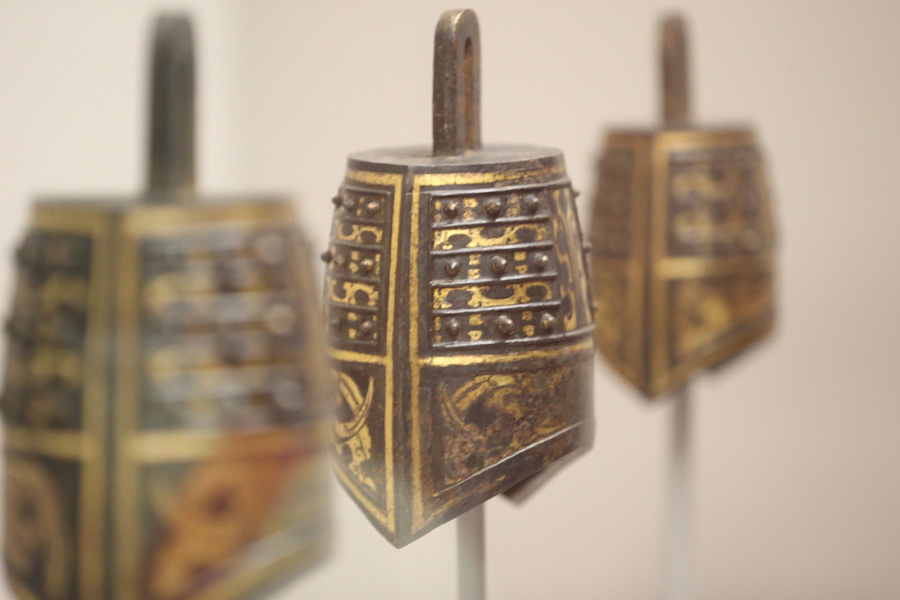How China became China
 |
|
Bronze bells inlaid with gold. [Photo provided to China Daily] |
In an interesting echo to Liu Fei's rhino and bear, a stone-carved lion turns up before the end of the exhibition. The lion, unearthed in Shandong province, bears an inscription on the back of its neck saying a stonemason had been brought to Shandong province from Luoyang city in what is now Henan province, just to make the lion, which once sat guarding the pathway to its owner's burial ground.
"Luoyang was the capital for the East Han," Shan says. "The Han Dynasty was divided into two periods: the Western Han from 206 BC to AD 24 and the Eastern Han from 25 to 220. Lions were probably kept in royal gardens in Luoyang. Although Liu Han, who did not enter royal service, probably had no chance to see a real-life lion, others did and recorded the images that eventually seeped out from inside the high walls of the palaces to provide a template for other artisans."
In an exhibition notes at demonstrating greatness, one note of poignancy or two are struck from time to time. The various pottery figurines unearthed from Xuzhou city, Jiangsu province, seem to have been captured in a trance, in a fleeting moment rendered lasting.
Two kneeling female musicians are believed to have been hitting a chime bell, while four sitting chariot drivers are reining in the horses, with another four armored drivers sitting right behind them. But the batons with which the women ostensibly played the music are gone, as well as the ropes, whips and weapons that should be in the hands of the drivers.
The wooden batons and the ropes had long rotted, but the hollowed fists are still closed, a powerful reminder of a time when China started to become China.












